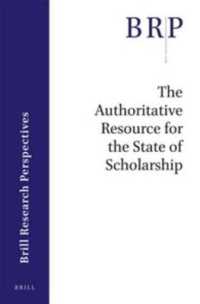Full Description
At a time when information systems are becoming ever more complex and quality to market and time to market are critical for many companies, a structured test process is essential. Even more important is a structured test management process to keep testing under control. Nowadays a test manager must have extensive knowledge of and experience with project management, risk assessment, team building, and, process improvement.
Based on their long-term industry experience, Pinkster and her coauthors describe a holistic approach to test management that combines test methods, test management, risk assessment and stakeholder management into one integral process, giving test managers, test coordinators, IT project managers, and QA managers a competitive edge in environments where there are numerous unstructured requirements, tough testing schedules and limited resources.
This book should be in every test manager's backpack!
Contents
1 Testing and Test Management.- 2 Risk & Requirement Based Testing.- 3 The Quick Scan.- 4 The Test Management File.- 5 Risk Analysis and Test Strategy.- 6 Estimation.- 7 Planning.- 8 The Test Organisation.- 9 The Dynamics of Testing.- 10 Progress Management.- 11 Issue Management.- 12 Reporting and Advice.- 13 Evaluation and Transfer.- A PRINCE2 and Test Management.- A.1 Similarities Between PRINCE2 and Test Management.- A.2 Position of a Test Project Within a PRINCE2 Project.- A.3 More PRINCE2.- B Checklist of Product Risks.- B.1 Checklist of Product Risks — End Users.- B.2 Checklist of Product Risks — Marketing.- B.3 Checklist of Product Risks — Support Department.- B.4 Checklist of Product Risks — IT Department.- B.5 Checklist of Product Risks — Internal Security.- C Template for Risk- & Requirement-Based Testing.- D Quality Attributes According to ISO9126.- E Template for Test Plan.- E.1 Management Summary.- E.2 Introduction.- E.2.1 Documentation Used.- E.2.2 Standards and Procedures.- E.3 The Test Assignment.- E.3.1 Client.- E.3.2 Supplier.- E.3.3 Goal of the Assignment.- E.3.4 Scope.- E.3.5 Suspension Criteria and Resumption Requirements.- E.3.6 Test Project Deliverables.- E.3.7 Discharging the Test.- E.3.8 Starting Points and Preconditions.- E.3.9 Risks and Risk Countermeasures.- E.4 Test Approach.- E.4.1 Test Strategy.- E.4.2 Preparation.- E.4.3 Analysis.- E.4.4 Test Automation.- E.4.5 Execution and Transfer.- E.5 Planning and Budget.- E.6 Test Organisation.- E.6.1 Stakeholders.- E.6.2 Tasks, Authorities and Responsibilities.- E.6.3 Meetings.- E.6.4 Communication.- E.7 Description of the Test Environment.- E.8 Transfer of Testware to the Organisation.- E.9 Appendices.- F The Goal-Question-Metric (GQM) Method applied to testing.- G Checklist of ProjectRisks.- G.1 Organisation.- G.2 Test Project.- G.3 Test Team.- G.4 The Selected Test Method.- G.5 The Information System.- G.6 Test Environment(s).- G.7 Automated Testing.- H Template for Test Strategy.- H.1 Management Summary.- H.2 Introduction.- H.2.1 Seven Steps.- H.2.2 Documentation Used.- H.3 Stakeholders and Organisational Structure.- H.3.1 Stakeholders of the System.- H.3.2 Organisational structure.- H.4 Link product risks and quality attributes.- H.4.1 Product risk analysis.- H.4.2 Link product risks and quality attributes.- H.5 Test levels and acceptance criteria.- H.5.1 Test levels.- H.5.2 Acceptance criteria.- H.6 Cluster matrix.- H.7 Cluster cards.- I Testing Roles.- J Template for Progress Report.- K Template for Phase Report.- K.1 Management Summary.- K.2 Test Assignment Test Level.- K.3 Quality of the Information System.- K.3.1 Product Risks and Requirements.- K.3.2 Brief Overview of Issues.- K.3.3 Entry and Exit Criteria.- K.4 Planned Versus Realised.- K.4.1 Time.- K.4.2 Money.- K.4.3 Deliverables.- K.5 Recommendations.- L Template for Final Report.- L.1 Management summary.- L.2 Test assignment.- L.3 Quality of the information system.- L.3.1 Product risks and requirements.- L.3.2 Overview of issues.- L.3.3 Acceptance criteria.- L.4 Costs and benefits of the test project.- L.4.1 Costs in time.- L.4.2 Costs in money.- L.4.3 Benefits of the test project.- L.5 Recommendations.








